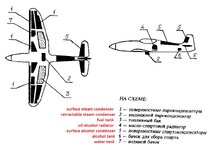- Thread starter
- #21
Be careful when you list the performance of prototype aircraft. It takes years to go from flying prototype to production and lots of aircraft in service.
Were the He-100's performance figures done with full armament, a full load of ammunition and fuel, and contemporary armour? Ernst Heinkel was into high speed flights.
Rest assured, I have no intention of listing Heinkel's performance figures - these will be unobtainable on same HP and 'classic' cooling system. As one can see, I'm trying to find the performance figures of actual combat aircraft that are of comparabe size and streamlining, like the VG33, B.135, D.520, Yak-1, MC.202, and then try to see how well a similar He 100 (= same or similar power, 'classic' cooling) might compare.
MG 151/20 was not be-all end-all weapon set up. One MG FFM or indeed MG 151/20 should fit as a motor-cannon. Install MG 131s in the wing roots and in the wing, now that it does not have steam running around.The He-100's armament was inadequate. How do you increase it? The He-100 was a tiny airplane. There was nowhere to stuff a pair of MG151/20s.
However, there is two years of ww2 before we stumble upon the MG 151/20.
What happens if some other manufacturer develops a high performance aircraft that uses BMW801 radials instead of the DB601s reserved for Messerschmitt?
Then the Allies have a problem, not Luftwaffe.
Are the engines shrunk to be able to fit somewhat smoothly to the airframe in the above two drawings? They seem it to, as the He 100 airframe was "small".
I can talk about my ... brainchild. Note that cooling system protrudes well under the fuselage - than it was not the case with 'donor' aircraft (Avia B.35/135).
Unfortunately, I'm not aware of a model of such an aircraft.


